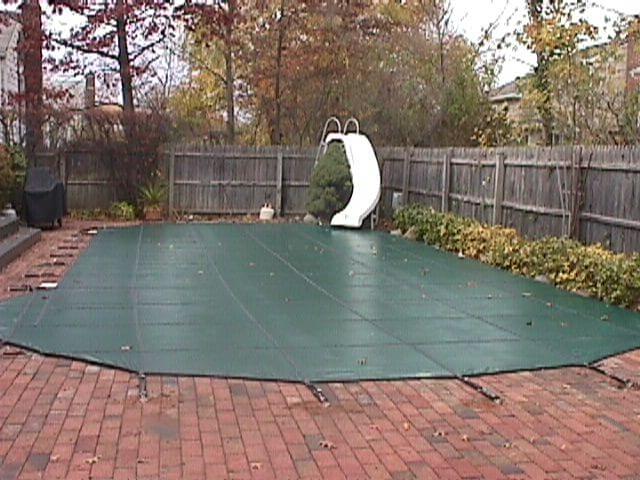Tips for a Successful Pool Closing
Education, General Pool Care, Pool Care, Pools, Water Care
Taking the time to protect your pool now will make things easier in the Spring
This time of year is always a little melancholy for us here at Pettis Pools. Closing the pool is a sure sign summer has ended and we have to say goodbye to all the fun times in the pool for this year. However, taking the time to protect your pool now will make things easier in the spring and you’ll be back in your pool that much faster!
The very first thing to do is to take a moment to check the water level to make sure there are no leaks in your pool. If you are unaware of a leak, the water may slowly drain out during the winter season and leave you with a potential problem. Once you are sure there is no leak, you are ready to begin.
It’s very important to balance your pool water prior to closing. About 4-7 days before closing day, bring a sample of your pool water into either Pettis Pools location for our FREE analysis. Your pool pH (7.4-7.8), pool alkalinity (80-100), and calcium hardness (180-250) should all be in the proper ranges prior to closing. It’s also important to shock the pool with an appropriate shocking product to oxidize any organic contaminants. This should be done at least two days prior to closing day to allow adequate circulation time. Check your sanitizer level and make sure that is also in range before adding pool algaecides, pool winterizing chemicals or your pool cover.
Clean and Backwash the Filter and Drain Your Equipment
Take the time to do one final brush and vacuum, then it’s time to back-wash your filter.
If you already have leaves, worms, etc. in your pool you may want to vacuum on the waste position and pump this debris directly out of the pool. This will also serve the double purpose of lowering your water level to proper closing levels.
Your pump, filter, heater, and chlorinator all have a drain plug. Either drain the water out of these or blow the line out. It is very important to remove as much water as possible and as an added precaution we advise leaving the drain plugs off for the winter. That way if any water is left inside the lines when it freezes and expands it will have somewhere to go vs. cracking any of the above items. For cartridge or DE filters, this is also a good time to take out and clean the grids or cartridges and store them away for the winter. If the filter is small enough, you might be able to take it apart before storing. Again, remember to keep the plugs out of these units. If you plug them back up and water happens to get into them, they could freeze and crack your equipment.
It’s a good idea to place all the plugs in the skimmer basket during your pool winterization maintenance. By doing this, you’ll know where they are when you need them in the spring!
If you have a sand filter, be sure you put the Multi-Port valve in the closed or “winterize” position and remove any pressure gauges.
After you drain the pump, turn it on for second or two to get the water out of the impeller. Be aware, if you run the pump any longer the seal can burn up.
Remove Pool Accessories
Take the skimmer baskets, wall fittings, vacuums, pool cleaners, ladders, handrails, or anything else that shouldn’t be in the pool out. Then scoop away debris on the top and bottom of the pool using a good leaf rake. You may also want to invest in a winter conditioner or a winterization swimming pool water treatment kit to keep your pool water chemistry on the right track.
Lower The Water Level
If your water level still needs to be lowered, use a submersible pump to lower your pool water level. You’ll need to be about 3″-5″ below the lowest plumbing line (normally the water return line). Be sure the water level is at least below the skimmer.
Time for Your Pool Cover

Loop Loc Cover
Now is the time to break out your above ground pool winter cover or inground pool winter cover to keep the debris out of the pool. Pool covers are always made larger than the pool. Generally speaking, aboveground pool covers are at least three to four feet larger than the pool size. Pool covers are made to lie on top of the pool water; they are not made to stretch across.
Also, in our part of the country, use an air pillow or ice equalizer to prevent the pool wall from crinkling when everything freezes.
If you have any questions on the above tips, please feel free to call or stop in either Pettis Pools & Patio location. Our knowledgeable staff will be more than happy to answer your questions and help ensure a smooth closing.